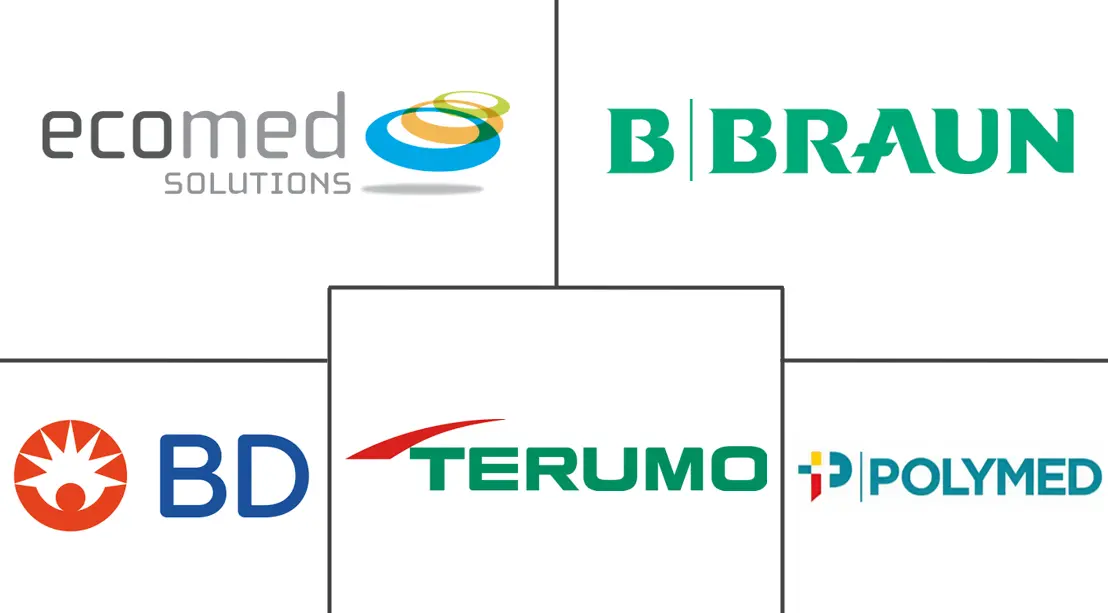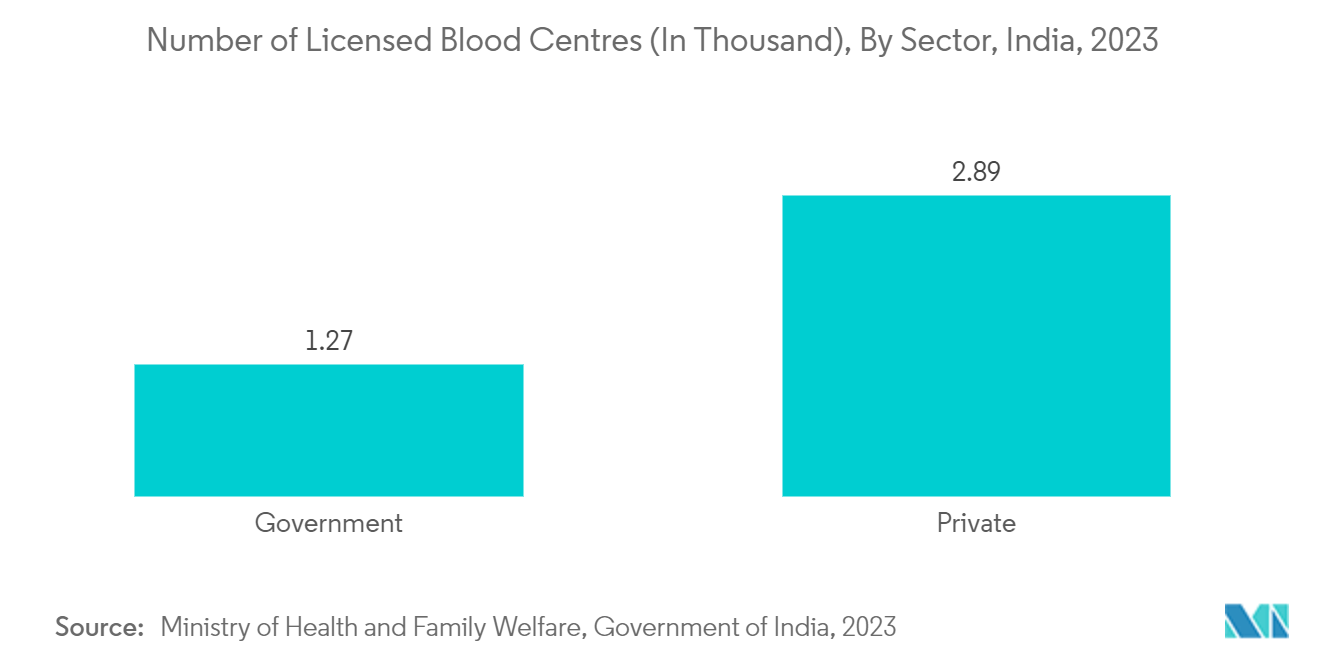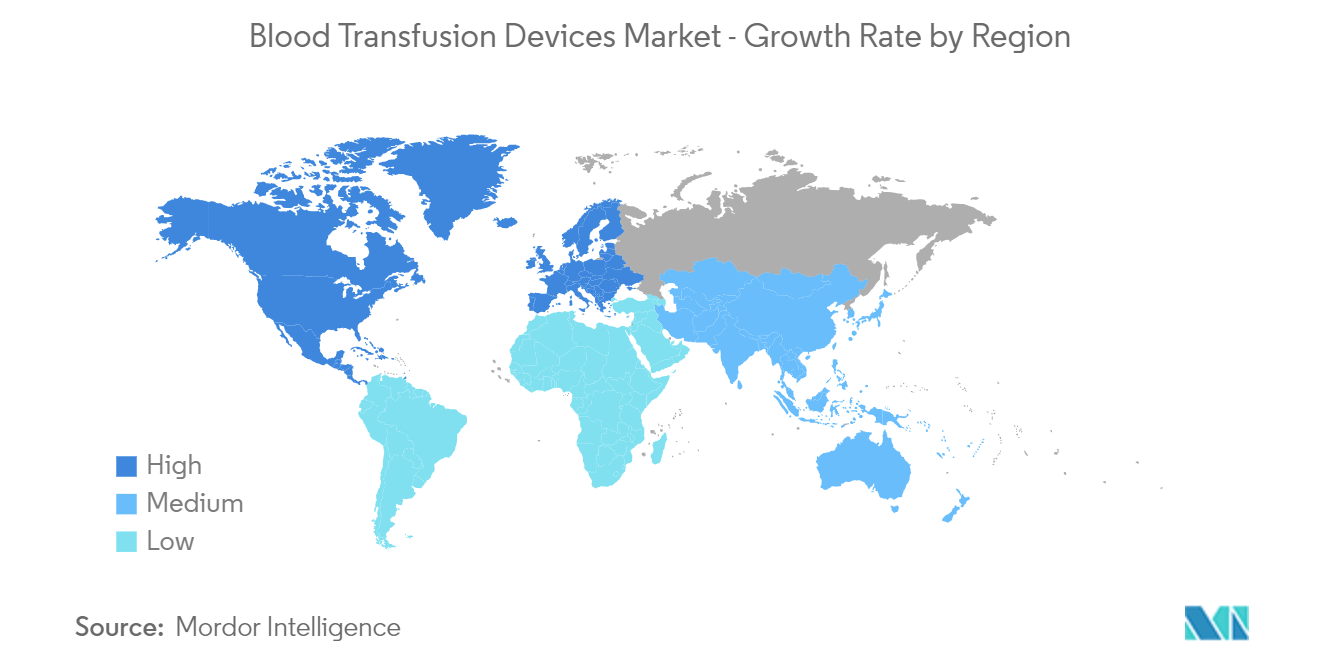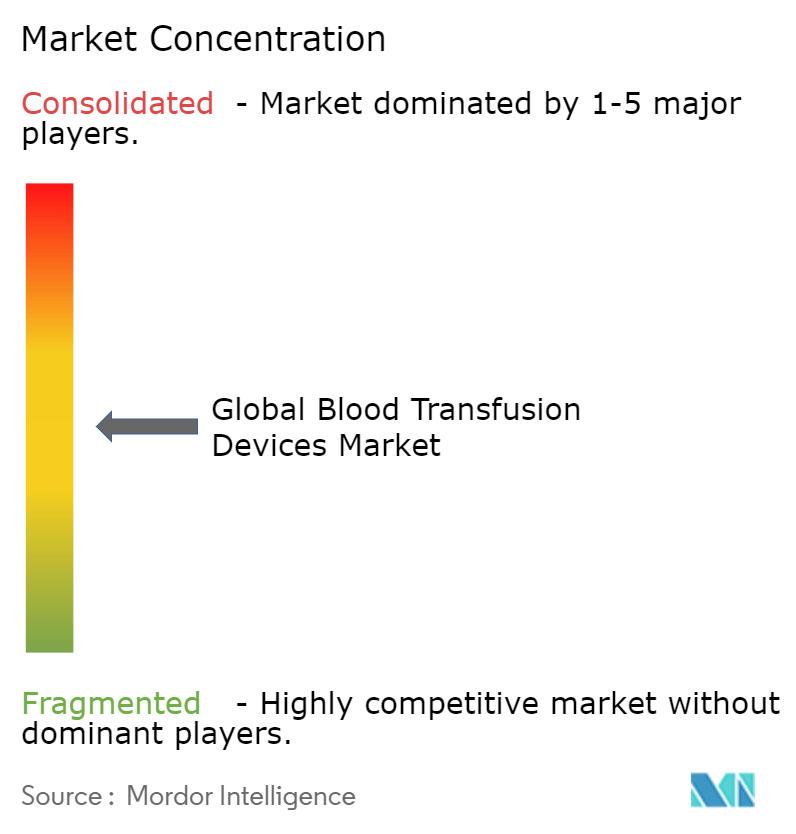Blood Transfusion Devices Market Analysis
The Global Blood Transfusion Devices Market size is estimated at USD 7.92 billion in 2025, and is expected to reach USD 11.21 billion by 2030, at a CAGR of 7.19% during the forecast period (2025-2030).
Market growth is being driven by several factors, including an uptick in surgical procedures, a rise in blood disorders, and technological advancements in transfusion devices. Blood transfusions are most commonly required in surgeries such as cardiovascular procedures, C-sections, and treatments for trauma and accident injuries. As the demand for blood in these surgeries grows, so does the need for blood transfusion devices.
For instance, data from the Health Sciences Authority (HSA) in September 2024 revealed that Singapore's national authority collected 122,668 whole blood donations and 8,378 apheresis donations in 2023. Furthermore, HSA noted that Singapore's hourly requirement is 14 units of blood, amounting to 325 units daily and a staggering 118,750 units annually. This underscores the heightened demand for blood, especially for surgeries, suggesting a corresponding rise in the need for blood transfusion devices and, consequently, market growth during the study period.
Blood-related disorders like leukemia, lymphoma, myeloma, and myelodysplastic syndromes (MDS) impact the bone marrow, blood cells, lymph nodes, and the broader lymphatic system. Apheresis technology has been pivotal in managing these conditions, especially in controlling white cell counts until other medications take effect. For instance, the American Cancer Society reported in January 2023 that the U.S. recorded approximately 59,610 new cases of leukemia and about 20,380 new cases of acute myeloid leukemia (AML) in 2023. Blood transfusions play a crucial role in replenishing red cells, platelets, and other components for patients with these disorders. Given the rising prevalence of blood-related diseases, the demand for blood transfusion devices is poised to grow, positively influencing market expansion.
In summary, the escalating demand for blood and the rising prevalence of blood-related disorders are set to drive the need for blood transfusion devices, fueling market growth in the coming years. Yet, challenges like stringent regulations and the high costs of managing blood and its components could temper this growth.
Blood Transfusion Devices Market Trends
The Pathogen Reduction System is Expected to Witness a Healthy Growth Over the Forecast Period
The blood transfusion market's pathogen reduction system segment is poised for robust growth in the coming years. This surge in demand is driven by the advent of cost-effective, innovative solutions designed to inactivate or diminish infection risks. For instance, Cerus Corporation's INTERCEPT Blood System not only curtails the risk of transfusion-transmitted infections (TTIs) but also ensures pathogen reduction for platelet components. Such advancements offer invaluable solutions to blood centers and hospitals, ultimately safeguarding patients in need.
Primarily, the pathogen reduction system addresses leukostasis, a condition stemming from elevated white blood counts in leukemia, and manages transfusion-related infections. A December 2023 study in the International Journal of Transfusion Medicine highlighted the prowess of pathogen reduction (PR) technology. It underscored PR's capability to diminish the risk of TTIs, especially bacterial infections (TTBIs) associated with platelet concentrates (PCs). Given these insights, the segment's growth trajectory appears promising.
Moreover, the rise of new laboratories dedicated to blood research amplifies the demand for pathogen reduction systems, further fueling the segment's expansion. For instance, n December 2023, the FDA's Center for Biologics Evaluation and Research (CBER) announced plans for a new pathogen reduction laboratory within the Office of Blood Research and Review (OBRR) in the U.S. This lab's mission is to advance novel pathogen inactivation technologies, with aspirations of reducing or entirely eliminating the need for donor deferral and testing.
In conclusion, the combination of these devices' extensive applications and the inauguration of new blood research laboratories signals a promising growth trajectory for the segment in the foreseeable future.
North America is Expected to Witness Considerable Growth Over the Forecast Period
North America's market growth is fueled by rising trauma cases, an uptick in surgical procedures, technological innovations, and the dominance of key industry players. For instance, data from the Canadian Institute for Health Information, published in November 2023, highlighted a rise in hysterectomy rates in Canada. In 2022, the rate stood at 269 per 100,000 females, up from 234 the previous year. This uptick in hysterectomies, often necessitating blood transfusions, underscores the region's market growth potential.
Moreover, enhanced training and education on blood transfusion devices are poised to elevate their usage, further propelling market growth. A case in point: in May 2023, Terumo Blood and Cell Technologies launched an innovative training initiative in the U.S. This program is designed to aid cell and gene therapy manufacturers in optimizing their cell collection methods, thus accelerating therapeutic commercialization. Central to this initiative is apheresis training, a vital procedure for cell collection and a cornerstone in developing essential cell therapies. Given the rising surgical procedures like hysterectomies and the introduction of specialized training programs, the region is set for significant market growth in the coming years.
Blood Transfusion Devices Industry Overview
The blood transfusion devices market is semi-consolidated. The competitive landscape is characterized by a mix of established players and emerging companies. Key factors influencing competition include technological advancements, regulatory approvals, product innovation, and market expansion strategies. Some of the market players include Terumo Corporation, Ecomed Solutions, LLC., Becton Dickinson and Company, and B. Braun Melsungen AG., among others.
Blood Transfusion Devices Market Leaders
-
Terumo Corporation
-
Ecomed Solutions, LLC.
-
Becton Dickinson and Company
-
B. Braun Melsungen AG
-
Polymedicure
- *Disclaimer: Major Players sorted in no particular order
Blood Transfusion Devices Market News
- May 2024: The Egyptian Authority for Unified Procurement, Medical Supply, and Management of Medical Technology (UPA) has signed an agreement with JMS Japan, a leading manufacturer of blood bags, to set up a new production facility in Egypt.
- August 2023: Terumo Blood and Cell Technologies (Terumo BCT) announced that its Reveos device, which processes blood into platelets using a single centrifugation, received clearance from the United States Food and Drug Administration (FDA).
Blood Transfusion Devices Industry Segmentation
As per the scope of the report, blood transfusion is a process in which blood and blood products are collected and transfused into one’s circulation intravenously. Blood transfusion devices include medical devices used in the collection, processing, separation, and preservation of blood and blood products.
The blood transfusion devices market is segmented by product, end-user, and geography. By product, the market is segmented into blood bags and accessories, blood mixers, filters, blood component separators, apheresis devices, pathogen reduction systems, consumables and supplies, and other products. By end-user, the market is segmented into hospitals, ambulatory surgery centers, blood banks, and other end-users. By geography, the market is segmented into North America, Europe, Asia-Pacific, the Middle East and Africa, and South America. The market report also covers the estimated market sizes and trends for 17 different countries across major regions globally. The report offers the value (in USD) for the above segments.
| By Product | Blood Bag and Accessory | ||
| Blood Mixer | |||
| Filter | |||
| Blood Component Separator | |||
| Apheresis Device | |||
| Pathogen Reduction System | |||
| Consumables and Supplies | |||
| Other Products | |||
| By End-user | Hospital | ||
| Ambulatory Surgical Centres | |||
| Blood Bank | |||
| Other End-users | |||
| Geography | North America | United States | |
| Canada | |||
| Mexico | |||
| Europe | Germany | ||
| United Kingdom | |||
| France | |||
| Italy | |||
| Spain | |||
| Rest of Europe | |||
| Asia-Pacific | China | ||
| Japan | |||
| India | |||
| Australia | |||
| South Korea | |||
| Rest of Asia-Pacific | |||
| Middle East and Africa | GCC | ||
| South Africa | |||
| Rest of Middle East and Africa | |||
| South America | Brazil | ||
| Argentina | |||
| Rest of South America | |||
Global Blood Transfusion Devices Market Research Faqs
How big is the Global Blood Transfusion Devices Market?
The Global Blood Transfusion Devices Market size is expected to reach USD 7.92 billion in 2025 and grow at a CAGR of 7.19% to reach USD 11.21 billion by 2030.
What is the current Global Blood Transfusion Devices Market size?
In 2025, the Global Blood Transfusion Devices Market size is expected to reach USD 7.92 billion.
Who are the key players in Global Blood Transfusion Devices Market?
Terumo Corporation, Ecomed Solutions, LLC., Becton Dickinson and Company, B. Braun Melsungen AG and Polymedicure are the major companies operating in the Global Blood Transfusion Devices Market.
Which is the fastest growing region in Global Blood Transfusion Devices Market?
Asia Pacific is estimated to grow at the highest CAGR over the forecast period (2025-2030).
Which region has the biggest share in Global Blood Transfusion Devices Market?
In 2025, the North America accounts for the largest market share in Global Blood Transfusion Devices Market.
What years does this Global Blood Transfusion Devices Market cover, and what was the market size in 2024?
In 2024, the Global Blood Transfusion Devices Market size was estimated at USD 7.35 billion. The report covers the Global Blood Transfusion Devices Market historical market size for years: 2019, 2020, 2021, 2022, 2023 and 2024. The report also forecasts the Global Blood Transfusion Devices Market size for years: 2025, 2026, 2027, 2028, 2029 and 2030.
Our Best Selling Reports
Global Blood Transfusion Devices Industry Report
Statistics for the 2025 Global Blood Transfusion Devices market share, size and revenue growth rate, created by Mordor Intelligence™ Industry Reports. Global Blood Transfusion Devices analysis includes a market forecast outlook for 2025 to 2030 and historical overview. Get a sample of this industry analysis as a free report PDF download.







